Where The White Buffalo Roams
DIRECTED BY J. LEE THOMPSON
STREET DATE: JUNE 27TH, 2023/KINO LORBER STUDIO CLASSICS
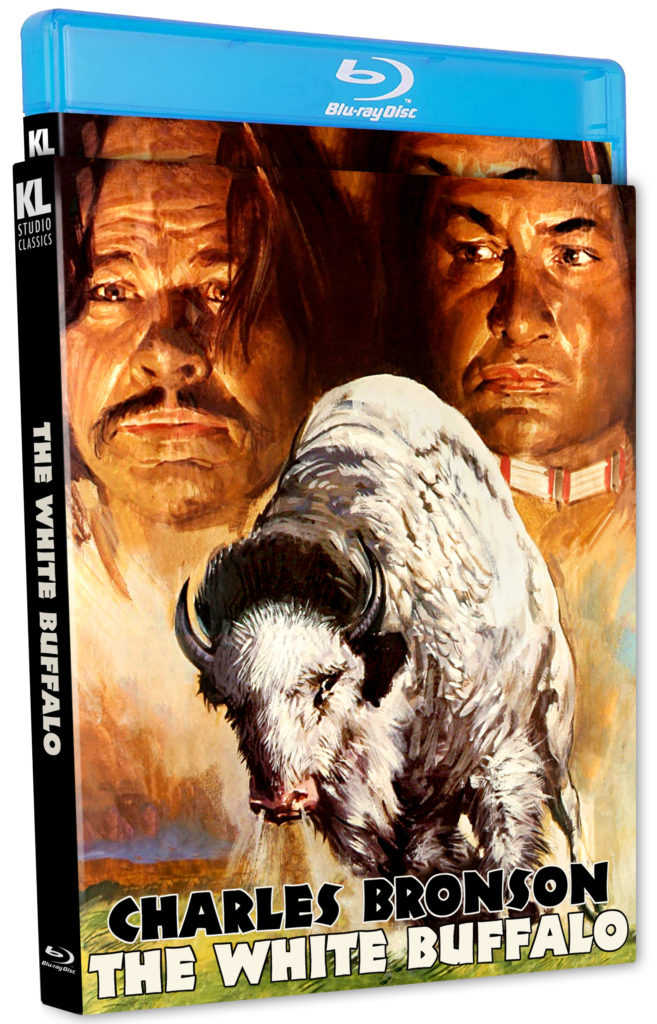
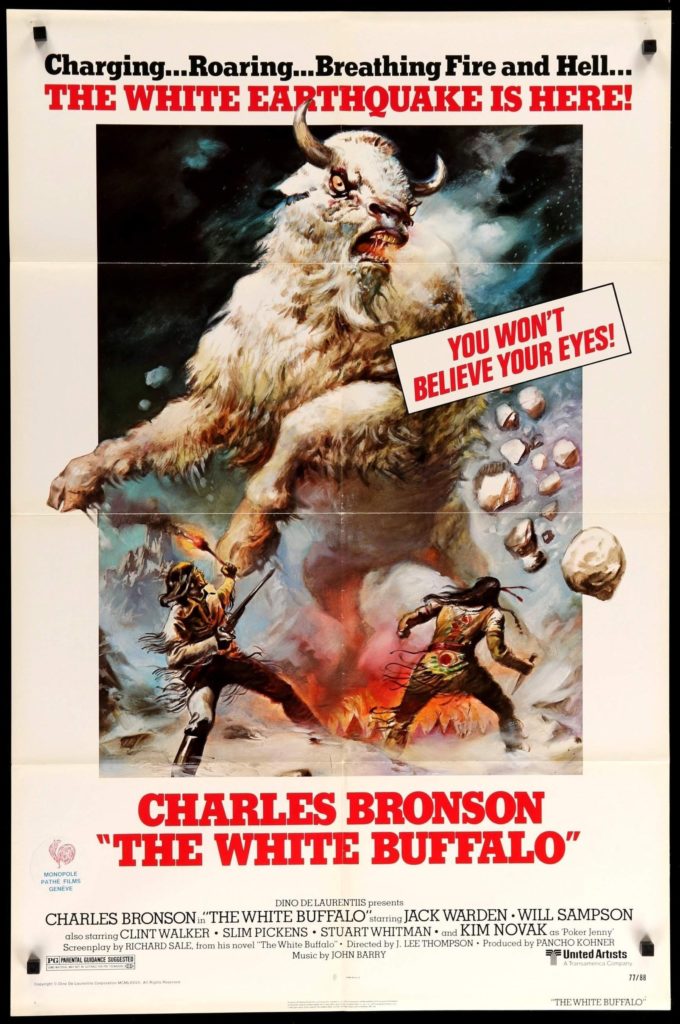
That poster is the shit, amirite? A cult item in itself, brilliantly realized by fantasy artist Boris Vallejo, that truly graphic image extends to one of the all-time great movie trailers, which in under two minutes further lays out the deliriously ludicrous Western legend of notorious gunman Wild Bill Hickok and Oglala war-chief Crazy Horse teaming-up to hunt down an elementally destructive albino mountain-beast. Pink-eyed, breathing crystal-fire and mountain-ice, bellowing the very rage of nature against puny man, spears, daggers, double-fisted six-gun bursts, and echoing shotgun-blasts merely bounce off its weather-toughened hide as it stampedes through snowy plains and frost-bitten tundras, its three-foot horns curving and sharpening to instantly gore and eviscerate any living thing in its path.
Charles Bronson and Will Sampson, with Jack Warden as a cyclopean glass-eyed galoot named ol’ Charlie, star as the Western legends pursuing the Western myth in director J. Lee Thompson’s largely successful extension of that poster-image and movie-trailer towards a post-Jaws (1975) summer spectacle of Man vs. Beast. A latter-day cult movie that strongly lives up to its frankly ridiculous but undeniably fun premise, Kino Lorber Studio Classics gives The White Buffalo the slip-cover, reversible-image, and 2K remaster treatment that to many fans of schlock, Westerns, and Charles Bronson’s always adventurous post-Death Wish (1974) career-choices all undoubtedly feel it so richly deserves.
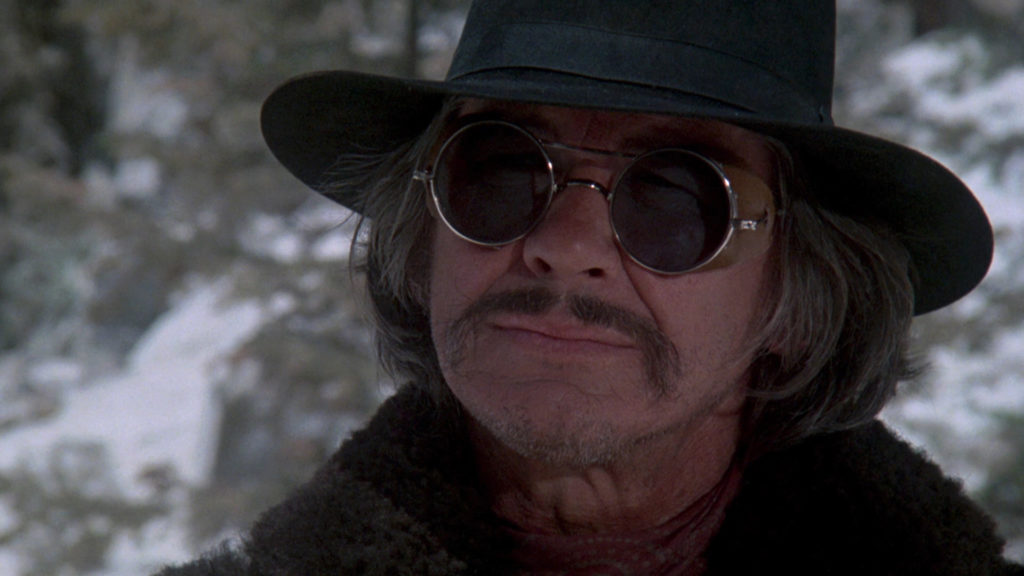
Set in 1874, along dusty trails, muddy frontier towns, sand-scorched canyon depths, and snow-drifting cliffs bordering the Dakota Badlands, former lawman Wild Bill Hickok (Bronson) and disgraced Lakota warrior Crazy Horse (Sampson) individually travel alone and incognito under assumed identities, the latter on double-horseback through Sioux territory and the former in the ever far-reaching steelhorse pushing its iron-laid train-tracks further and further West.
Both haunted by visions and dreams of a white buffalo terrorizing the plains, reports of just such a cliff- and cave-dwelling creature reach Wild Bill and Crazy Horse individually of the other by telegraph, news, and hearsay, respectively, even as that shared nightmare of the “white spike” pawing the snow-banks of a lonely butte-clearing called Armageddon draw the unlikely pair towards their fateful encounter.
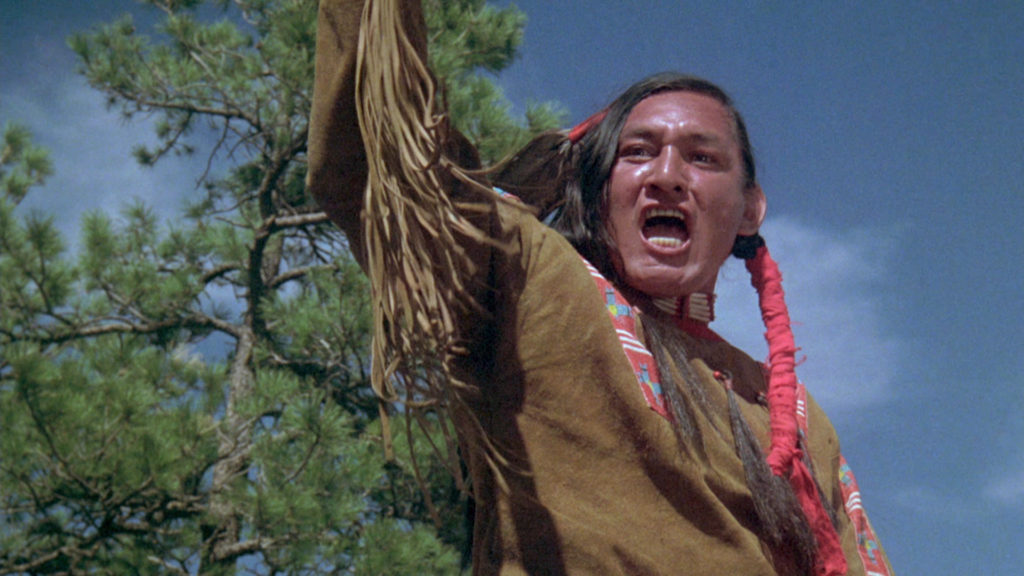
An equally unlikely alliance forms between the two legends of the Old West, banding together despite the cultural conflicts that make them natural enemies, that conflict otherwise represented in Hickok’s querulous, one-eyed prospecting companion Charlie Zane (Jack Warden). Fighting off Crazy Horse’s Kickapoo adversaries mid-film, the Oglala outcast returns the favor with some deadly steel-tipped arrow-work on outlaw Wild Bill’s pursuant Whistling Jack Kileen (Clint Walker); with ol’ Charlie a capable shotgun-hand in both melees, but more narrowly focused on the $2000 gold-piece value of their quarry’s white pelt, and the white man’s even narrower delight in putting a bullet just under any native’s war-feather. Putting (most) differences aside, however, the dream-vision eventually becomes reality as the trio eventually reach Armageddon, the mettle of their daggers, spears, six-guns, and shotguns likely inferior to a blizzard-like force concentrated wholly in this world, but possibly drawing on the next.
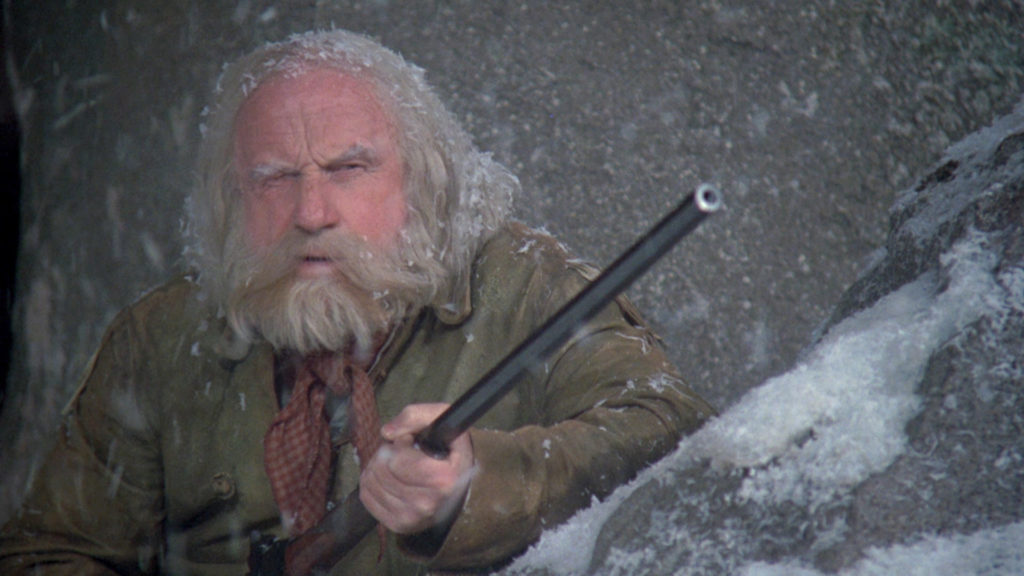
With John Barry’s characteristically character-driven score alternately shimmering and romantic, playing over lovely landscape views and under thematically-deepening dialogue exchanges, and then suddenly atonal and caustic, signaling a menacing view of the hind-rearing behemoth or punctuating moments of conflict or violence, the shifting of mood and tone serves this persistently odd genre-hybrid quite well, actually, in that The White Buffalo in viewing develops into the rare pulp-historical fantasy-horror mash-up where the ridiculous and the profound essentially merge to become one. Richard Sale’s script, adapting his 1975 novel of the same title, is chock-filled with wonderful lines like “You’re talking yourself to death”, Wild Bill signing off on the gunfight that follows with the truly memorable “Swear yourself into Hell”; and the period-sounding slang employed throughout, as when Wild Bill restrains Charlie’s trigger-happy finger on Crazy Horse with a cautionary, “You try hanging a wooden suit on that child, you’ll answer to me!”, later echoed by Charlie’s announcing his intention of making “a pee-warmer of a breakfast” when they all take frozen refuge in an ice-cave. Balanced against the trio’s provocative discussion of “red truth, white truth, [and] true truth” immediately following, there’s enough liminal relevance in the cold-drawn air, along with the falling snow, to remind revisionist-minded viewers not only of the dying off of gunfighters and natives alike, but also the diminishing environment of their quarry, representing a possible endpoint for the Old West itself with its passing.
Director J. Lee Thompson, in his second film with Bronson, following 1976’s twisty meta-whodunit St. Ives, brings an eye for realism here in evocative details like the refuse-mountain of hunted buffalo bones ground for fertilizer at one train station, or the mud-and-horseshit municipally lining the streets of Fetterman as the Badlands appropriately worsen. That hell-town’s “Frozen Dog Saloon”, for one, is a mini-masterpiece of down-‘n-dirty production design, its makeshift interior of rotting timbers and morals a memorably tense frontier-space for table-gambling, curtain-drawn prostitution, and climactic gunplay. Featuring strong appearances scattered throughout from recognizable if fleeting denizens of the Old Movie & TV West such as Slim Pickens, Stuart Whitman, Douglas Frawley, John Carradine, Cara Williams, and Ed Lauter – Clint Walker’s larger role as Wild Bill’s main antagonist has already been mentioned, while Kim Novak’s yet unmentioned mid-film cameo-turn as Wild Bill’s old flame Poker Jenny adds romantic depth to a story otherwise lacking same – The White Buffalo overall realizes its period and setting in resonantly verisimilitudinous terms, simultaneously to developing its decidedly weirder fantasy and otherworldly elements.
Which brings us to what attracts most to this movie, anyway: the Great Beast, itself. Bronson’s previous, post-Death Wish (1974) credits include two offbeat Westerns in the train-speeding mystery adventure film Breakheart Pass (1975) and the satirical/parodic romance From Noon Till Three (ibid.), but of course here far exceeds in both content and impact what turned out to be the actor’s final period-set Western; perhaps uncoincidentally also Bronson’s last film of his half-decade, five-film association with Italian mega-producer Dino De Laurentiis. For those that may have thought the Great Beast referred to Bronson above, or even to his six-and-a-half foot-tall Muscogee-descended co-star Will Sampson, the more pertinent reference to DDL, at the zenith of his producing powers, might evoke contemporary visions of the jungle- and skyscraper-scaling giant ape of King Kong (1976), or the sea-depths rattling killer whale of Orca (1977). Our hide-bleached animatronic bulldozer riding both mechanically and non-visually-processed over a tarp-covered desert canyon, the range and plains strewn with iridescent, falling shredded plastic-flakes and the mountain-monster rearing hind-legs akimbo over it all similarly “exists” – a full two decades before CGI! – between the ludicrous and terrifying, and the historical and fantastical, in the imaginatively-wrought nether-space where The White Buffalo roams.
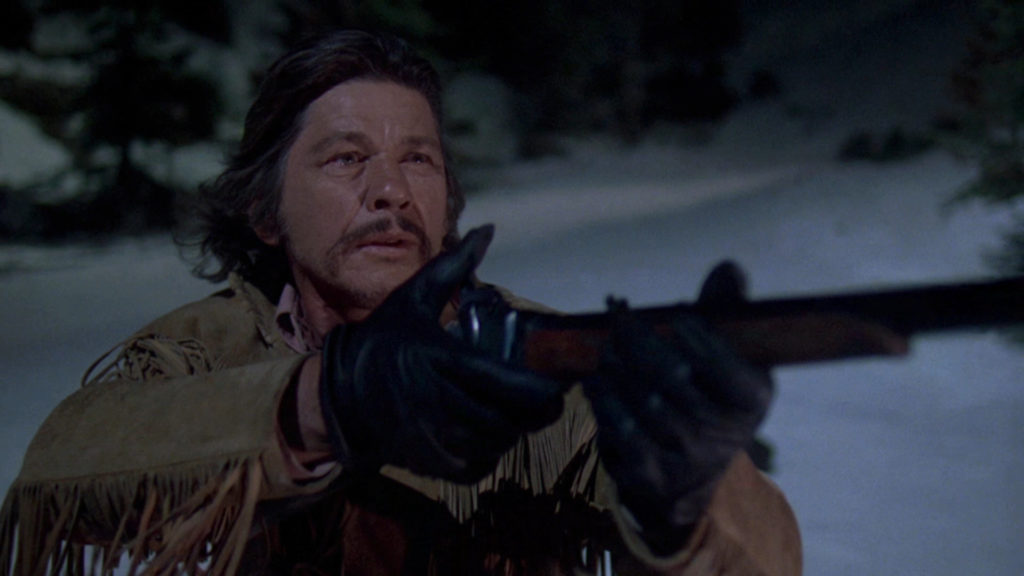
Many of the production details included in the previous sentence are thanks to feature-length commentator Paul Talbot, author of Bronson’s Loose! The Making of the Death Wish films (2006) and Bronson’s Loose Again! On the Set with Charles Bronson (2015), whose journalistic and research-oriented approach to his subject in general and this movie in particular becomes increasingly interesting while listening along, possibly due to the inherently outrageous appeal of the material. While I personally have been a little underwhelmed with Mr. Talbot’s commentaries in the past, especially given his tendency to recycle previously prepared material from his other commentaries, his due diligence done on The White Buffalo is about as complete a picture of its complicated production as one is likely to get anywhere else, and is therefore invaluable for its organization and clarity. I still think Bronson also deserves some of the more analytical treatment as for example found in Howard Berger, Steve Mitchell, and Nathaniel Thompson’s superb audio-work on Bronson’s earlier Euro-thrillers, but The White Buffalo is again well-served, especially in terms of explaining the many often bizarre choices made during filming that resulted in a wholly unique film, by a competent reporting job as straightforward and no-frills as its leading man.
Finally, a word on the visual clarity of this Blu-ray release of this new 2K master. Admirably reproducing some of the trickier visual-distortion effects, a split-diopter lens used liberally throughout, the focal-image appears in this transfer to have greater fidelity to the eerie depth-of-field intended; without altering, or worse, “correcting” some of the resulting blurriness sometimes apparent in the center of the frame. While its artistic-narrative intent may to some exceed its grasp of visual-impact, that darn white spike is really up there, goldurnit, and no garsh-dang movin’ telescope ‘ll keep ‘er outta the keen-eyed sights of Wild Bill or the arrow-slung reach of Crazy Horse hisself; with due apologies to ol’ Charlie.
The images used in this review, taken from a previous Blu-ray release captured by and credited to DVDBeaver, are used only as a reference to the film and do not reflect the quality of this new transfer and home video release.

